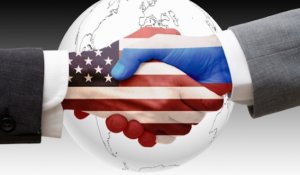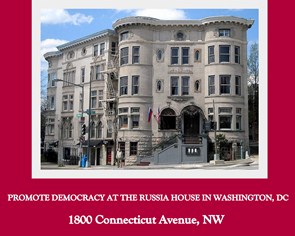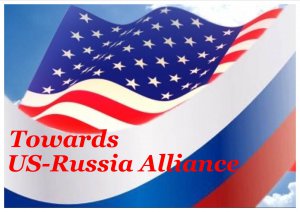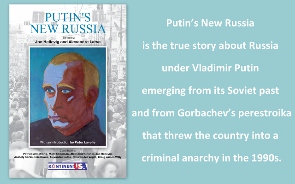
Simon Saradzhyan
.
This month marks the tenth anniversary of Vladimir Putin’s first military intervention abroad, in Georgia. Since then there have been two more, continuing to this day, in Ukraine and Syria in 2014 and 2015, respectively. And still it’s worth asking: When does Putin authorize the use of military force, overtly or covertly, against other countries and why?
In my view, at least two conditions need to be in place for Russia’s leadership to seriously consider this option. They can be broadly defined as follows: First, Putin has to see an acute threat to Russia’s vital national interests that he thinks cannot be neutralized by any means short of force; I’ll call the presence of such threats "Condition 1.” The situation in Georgia in 2008 threatened key Russian interests in several ways, including an attack on an ally or client (also the case in Syria in 2015) and, more important, concern that one of Moscow’s post-Soviet neighbors may "escape” to what Russia sees as a hostile alliance (also the case in the ongoing conflict with Ukraine). A full list of Russia’s vital interests and how they are impacted by Russia’s interventions is in the table in section IV below.
The second condition for Russia to use military force against another country is that Moscow must have a reasonable hope that such actions would yield a net reduction in threats to Russia’s vital interests ("Condition 2”). This may not mean outright victory. But Russian leaders must be confident that the benefits of using force would outweigh the costs and that their military would either prevail in the confrontation or at least ensure a stalemate that would constrain the targeted state’s ability to seriously undermine Russia’s vital interests.
Again, both conditions need to be present for Putin’s Russia to use force against other states on a large scale; neither one by itself is sufficient. In my view, all three instances in which Putin has authorized large-scale use of force abroad met these criteria—in Georgia, Ukraine and Syria. It is also my view that one of these two conditions was absent during the revolutions in Kyrgyzstan and Armenia, explaining why Putin chose not to intervene in these two former Soviet republics. Let’s explore each of these instances in detail.
I. Russian Military Interventions Abroad Under Putin
I.A. Russian-Georgian War of 2008
In April 2008 a NATO summit in Bucharest was meant to be the culmination of efforts by the George W. Bush administration to get the alliance to formally invite the former Soviet republics of Georgia and Ukraine into its fold. Although the summit ultimately did not offer either one the coveted membership action plan (MAP)—thanks in part to opposition from German Chancellor Angela Merkel—its final communique did say that "NATO welcomes Ukraine’s and Georgia’s Euro-Atlantic aspirations for membership in NATO. We agreed today that these countries will become members of NATO.” Putin—who was prime minister at the time, but played a direct role in ordering Russia’s military action in Georgia—would have seen this promise, and its implicit prospect of future MAPs, as an unacceptable threat to several Russian vital interests: ensuring Russian allies' survival and active cooperation with Moscow; ensuring that Russia is surrounded by friendly states, among which it can play a leading role and in cooperation with which it can thrive; and preventing the emergence and/or expansion of hostile powers and/or alliances on or near Russian borders.
Therefore, as seen from the Kremlin, Condition 1 emerged after the 2008 NATO summit. But was Condition 2 present then too? In Georgia, I believe it was. (For salient differences between Georgia and Ukraine at the time, see sections I.B and II.B.1 below.) In my view, Putin and his stand-in in the Kremlin, then-President Dmitry Medvedev, felt they could successfully defend Russia’s aforementioned interests in ways that would generate significant geopolitical benefit—namely, the non-expansion of NATO into Georgia—without prohibitive military or economic costs. Although Georgia had contributed substantial forces to the NATO-led operation in Afghanistan and the U.S.-led campaign in Iraq, it was not a NATO member, so the alliance could not invoke Article 5 if Russia were to use force. And the Kremlin calculated that the U.S. and its allies would not want to engage in a shooting war over this small, distant country in the South Caucasus in the absence of treaty obligations. Russian leaders also knew their military was powerful enough to quickly overwhelm the Georgian army in spite of all the problems that Russia’s war machine faced at the time. An economic boom in the late 1990s and early 2000s had allowed Russia to finance a major increase in military strength and otherwise boost its national power, according to a report I recently co-authored with Nabi Abdullaev of the Moscow School of Social and Economic Sciences. Finally, Russia’s leaders also knew that if they could provoke Georgian President Mikheil Saakashvili to use military force first against either of Georgia’s separatist provinces, South Ossetia or Abkhazia, then that could justify Russian intervention both domestically and internationally. This increased the likelihood that possible Western punishments for the attack would be of lesser consequence than the benefit of preventing Georgia’s accession to NATO. Indeed, there is strong evidence that Russian troops began to deploy into South Ossetia before Saakashvili ordered the ground offensive. Ultimately, the EU’s Independent International Fact-Finding Mission on the Conflict in Georgia found that Georgian troops launched a ground assault on the South Ossetian capital of Tskhinvali shortly after 3:00 a.m. on Aug. 9, 2008. That the Georgian army made the first move on the ground did not only give Moscow a pretext to use force, but also helped mitigate the West's negative reaction to Russia’s actions against Georgia.
I.B. Russian Intervention in Ukraine: Spring 2014 - Present
The ascent of Viktor Yanukovych to power in Kiev in 2010 substantially lowered the probability that Ukraine would soon enter NATO, thereby eliminating the need for Russian intervention as seen from Moscow. That changed in February 2014 when a pro-Western faction of Ukraine’s ruling elite ousted Yanukovych and retook power amid popular expectations that Ukraine’s leaders would seek to integrate their country into the Western world. Among other things, the leaders of the Euromaidan revolution vowed to enter into an Association Agreement with the EU, which included military cooperation like "exercises and training activities … in the framework of the Common Security and Defense Policy.” More important, the association agreement included the Deep and Comprehensive Free Trade Agreement (DCFTA), which made Ukraine’s participation in the Moscow-led Eurasian Economic Union all, but impossible, undermining Russia’s hopes of drawing Ukraine closer into its orbit. The Russian leadership feared that the association agreement and DCFTA would put Kiev firmly on a road leading to EU and then NATO membership, not only ruining Putin’s hopes for luring Ukraine into Russia’s own trade bloc, but also bringing a potential military foe to Russia’s doorstep. Again, Putin saw unacceptable threats to at least four of Russia’s vital interests: (1) ensuring allies' survival and active cooperation with Russia; (2) ensuring Russia is surrounded by friendly states; (3) preventing the emergence and/or expansion of hostile powers and/or alliances on or near Russian borders; and (4) ensuring the viability and stability of major flows of Russian exports and imports. In short, in Putin’s view, Condition 1 was clearly present.
Condition 2 was also present in post-revolutionary Ukraine. In spring of 2014 the environment was much more conducive to enforcing Russia’s red lines there than six years earlier, when Ukraine’s then president, the pro-Western Viktor Yushchenko, had lobbied NATO for a MAP. In 2008 Ukraine had a legitimately elected president, functioning government and no hotbeds of political violence. This meant the central authorities could not have been dismissed as illegitimate and that Kiev could organize a better response if Ukraine’s neighbors had interfered on its territory. In contrast, mayhem ruled in the wake of the Euromaidan revolution. The new government was initially unable to establish control over the entire country and violent clashes between protesters and pro-Russian activists kept erupting across several provinces. The Kremlin seized on the clashes to describe them as evidence of a major threat to Ukraine’s ethnic Russians, claiming it was Russia’s responsibility to protect them. This turmoil also impacted the command chains within the Ukrainian military, which had been seriously weakened by years of underfunding and mismanagement. The then sorry state of Ukraine’s war machine—whose drivers had to rely on public donations to buy batteries for their trucks, among other things—contrasted sharply with Russian forces, which were much more numerous and better trained and armed than Ukraine’s. Finally, as with Georgia, Putin calculated that no Western country would be willing to put boots on the ground to fight Russia in Ukraine. All this made him sure that Russia could prevail militarily. Moreover, Putin may have assumed the West would react to intervention in Ukraine as it did to Russia’s war with Georgia, so the costs would be temporary and less significant than the benefits. (That part of his calculus proved to be wrong.)
I.C. Russian Intervention in Syria: 2015 - Present
When protesters marched in Damascus in 2011, demanding the release of political prisoners and democratic reforms, Western countries saw this as another popular uprising against a brutal dictator. Putin held a different view, treating the protests as the beginning of another color revolution engineered by the West to displace a Russian ally. He nevertheless kept his guns at bay until 2015. By September of that year, however, there was clearly a real chance that a combination of moderate rebels and Islamists associated with international terrorist organizations, including ISIS and al-Qaeda, could oust Bashar al-Assad from power. Such a development would have shattered Russia’s reputation as a reliable protector of its allies. It would have also had a major negative impact on a vital Russian interest: ensuring the survival of its allies and their active cooperation. In the longer term, Assad’s ouster could also have had a formidable negative impact on other Russian vital interests, like preventing large-scale or sustained terrorist attacks on Russia and preventing the secession of territories from Russia: In 2015 it seemed truly possible that post-Assad Syria would be ruled by the likes of ISIS and al-Qaeda, becoming a haven for militant Islamists, including those who have vowed to attack Russia and build a caliphate in the predominantly Muslim regions in the country’s south. Also, Assad’s fall would have resulted in the loss of Russia’s naval facility in Syria’s Tartus and of lucrative contracts, including sales of high-value arms. The latter would have hurt another Russian vital interest: ensuring the viability and stability of major markets for Russian exports. In short, Condition 1 was present in Syria as of 2015.
Condition 2 was also present. For one, Assad himself welcomed Russia’s intervention, giving Russia the legal grounds to get involved. Also, Russia already had a military presence in Syria, allowing it to ship military cargoes there without drawing unwanted attention. As important, no Western country was willing to send its soldiers to fight for Syria. Finally, Putin may have thought the West would not impose major costs on Russia for the intervention, making the benefits of defending a secular, pro-Moscow regime in Syria all the greater.
II. When Has Russia Not Intervened? (Counterfactuals)
II.A. Armenia of 2018 and Kyrgyzstan of 2005 and 2010: Absence of Condition 1
It should be noted that Putin’s Russia does not intervene in another state’s affairs militarily just because a revolution is underway there. Putin refrained from intervening during the so-called color revolutions in Kyrgyzstan (2005 and 2010) and Armenia (2018) because the victorious new leaders signaled their desire to continue participating in Russian-led integration projects and showed no intention of trying to "escape” from Russia’s zone of influence. Neither does Putin’s Russia intervene militarily just because a post-Soviet country is undergoing democratization. Both Armenia and Kyrgyzstan are ranked more democratic than semi-authoritarian Russia. Moreover, the example of both countries suggests that post-Soviet states can build friendlier relations with Russia’s competitors as long as they do not pursue membership in alliances that Russia sees as rivals or hostile. Armenia has recently signed an EU Association Agreement (though it was watered down because of Russia) and it participates in NATO’s Partnership for Peace program. It also has troops in the NATO-led campaign in Afghanistan and even had troops in the U.S.-led campaign in Iraq (withdrawn in 2008). As for Kyrgyzstan, it has hosted a U.S. military base (which Russia reportedly pressured Bishkek to close down).
II.B: Ukraine of 2008 (and Montenegro of 2016?): Absence of Condition 2
II.B.1. Why Georgia but Not Ukraine in 2008?
When recalling the events of 2008, one cannot help wonder why Russia did not intervene in Ukraine. After all, President Yushchenko also actively lobbied for a MAP and got the same kind of promise of eventual NATO membership at the Bucharest summit as Saakashvili did. The difference is that Condition 2 was insufficiently present in Ukraine of 2008. Putin may have believed a simultaneous intervention in two countries would have stretched his military dangerously thin. Ukraine’s armed forces were larger than Georgia’s and Yushchenko did not—and was not likely to—give Putin the kind of pretext to intervene that Saakashvili did. Putin may also have believed that Georgia’s NATO ambitions represented a greater threat, especially as tensions over South Ossetia and Abkhazia escalated throughout the spring and summer of 2008. He may have thought, too, that Western punishment for such a double intervention would have been long-term and painful, greatly lessening or even negating the benefit of keeping Georgia and Ukraine out of NATO. More important, as noted above, Ukraine eventually "uncrossed” Russia’s red line: In 2010 Yushchenko lost the presidency to the more Moscow-friendly Viktor Yanukovych who took pains to accommodate Russia’s concerns, announcing that Ukraine would not seek membership in NATO and extending the stay of Russia’s Black Sea Fleet in Crimea for several decades.
II.B.2. Montenegro?
Though two Russian nationals have been arrested for alleged involvement in a 2016 attempt to forcefully remove Montenegro’s pro-NATO Prime Minister Milo Dukanovic, it is not clear whether the Russian government was involved in an attempted coup. Moscow vehemently denies playing any role, while Montenegrin authorities have claimed the conspiracy was orchestrated by "Russian nationalists” and that Russian authorities may have been involved. In either case, Montenegro of 2016 represented a case when Condition 2 for Russian military intervention was absent. On one hand, Russia viewed Montenegro’s drive to join NATO as a threat to its national interests (though, obviously, membership would have represented a lesser threat than NATO expansion into countries bordering Russia and seen by Moscow as part of its zone of so-called privileged interests). On the other hand, however, there were no Russian troops in Montenegro, and there was no way to deploy them there without getting noticed. Moreover, Russian military intervention in Montenegro would have probably triggered additional EU and U.S. sanctions—on top of the ones in place for Russia’s actions in Ukraine and Syria—that would have outweighed the benefits of preventing this small nation’s accession to NATO. If the Russian state really was behind the attempt to oust Dukanovic, this would suggest that Russia felt constrained in its choice of options for keeping Montenegro out of NATO and opted for fomenting revolution.
III. Who (if Anyone) Could Be Next?
Moldova, which reluctantly plays host to a large Russian military contingent in its separatist province of Trans-Dniester, could be the next target of Russian intervention. Putin could intervene in this country, where parties loyal to its pro-Russian president and its pro-Western government are to face off in crucial parliamentary elections next year, if Moldova’s pursuit of integration with the EU and deeper cooperation with NATO progresses too far in his view. There’s also a chance that Putin may choose to escalate in Ukraine or Georgia if either manages to convince NATO to grant it a MAP. This prospect is unlikely, however, both for them and for Moldova. Therefore, while Russia will continue to use separatist enclaves in all three countries as leverage in efforts to prevent them from joining NATO, the probability of greater Russian intervention there in the short term is low, though not negligible.


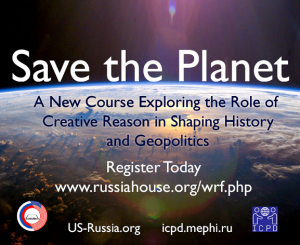
.jpg/250px-ElbeDay1945_(NARA_ww2-121).jpg)
